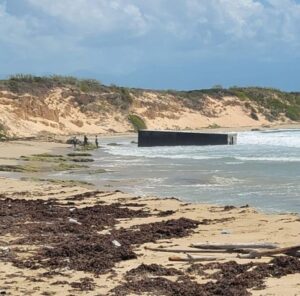
Investing in technology to drive the dairy industry
Minister of Agriculture and Fisheries Floyd Green has hailed the $1.2-billion redevelopment of Bodles Agricultural Research Station in Old Harbour, St Catherine, among other initiatives, as part of a wider research and development drive by the Government in the revival of the dairy industry.
While noting that there has been a lack of investment in the industry over a 20-year period, he pointed out that the spend will redound to new equipment and improved human resource capacity at the institution, which should be churning out research in agriculture and, in particular, the dairy industry over the next three years.
Moreover, the minister has informed the
Jamaica Observer that “there are developments of fodder banks” now underway to ensure there is adequate grass to feed cattle. Foddering refers to the drying of grass and/or hay to feed cattle.
“Fodder banks clearly go with the system of baling and storage,” he explained.
“We’re looking at the type of fodder that we’re putting in and ensuring that the content is in nutritional requirements, which is critical. We continuously look at R&D [research and development] to see if there are any localised solutions that we can utilise to help in terms of seed,” Green continued.
The Ministry of Agriculture and Fisheries’ investment in fodder banks seeks to address the challenge of grain shortage as exogenous shocks, such as the Russia-Ukraine war, not only reduce the supply of feed but drive up the cost as well, reducing access for many a small cattle farmer. Such is the impact of the war that even Seprod Group CEO Richard Pandohie has shared that the cost of grain has impacted the company’s dairy operation.
“The grain price directly affects animals feed, so if you talk to any farmer in Jamaica, they’ll tell you the price has gone through the roof since COVID. For example, grain prices, I mean like soy meal prices, those things are all external, those are all imported for the most part, and…you can see those prices globally,” he shared with
Business Observer.
While commending the agriculture minister on the acquisition of foddering machines, president of the Jamaica Agricultural Society (JAS) Lenworth Fulton is hopeful that Green will take a step further by introducing pelletising machines that convert grass and hay into bite-size pieces for cattle.
“As president of JAS, I have seen the display of baling and pelleting machines operating right here that the input suppliers, especially Hi-Pro, have brought in, but those are like for small farmers,” he expressed.
“So Minister Green is right, you could do what you call zero graze in certain parts of your farm where you bring the product [grass] to the animal, you could also make hay and soilage and there are many ways in which we can do it that is much less costly than buying manufactured feed,” Fulton continued.
He also emphasised the need for rainwater harvesting, noting that cattle drink a lot of water and the use of solar energy to power milking parlours.
In the meantime, the Ministry of Agriculture has secured two mobile milking parlours with a view to improve the productivity of small cattle farmers, especially in St Thomas and St Ann — both parishes being home to Seprod-owned Serge Island Dairies and Island Dairies, respectively.
“We’ve already dispatched one [milking parlour] in St Thomas among a cluster of farmers. We’re already seeing increased productivity from the use of that and we’re looking to dispatch the next in the near future,” Green informed
Business Observer.
Commenting on the reason for dispatching the mobile milking parlours in St Thomas and St Ann, he underscored that there are cattle farmers who have been in the dairy business over a number of years and have “a steady market”.
“So what we’re doing is helping them become more efficient, more productive and get greater returns on their investments. So what we will look at, clearly it is easier to work with clusters of farmers, especially clusters of small farmers, so that the mobile milking parlour can have its maximum impact by serving more than one farmer and that’s what is happening. So we’ve identified clusters in St Thomas and clusters in St Ann, largely because those areas would have seen the development of strong smallholder dairy producers,” the minister outlined.
While steering clear of giving a cost for the acquisition of the mobile parlours, Green noted that that information can be ascertained from the Jamaica Dairy Development Board.
For Seprod Group, CEO Pandohie disclosed to
Business Observer that in addition to investing in research and development, the conglomerate has also spent approximately $4 billion into the renovation of the Nestle’ plant in Bog Walk, St Catherine, though not providing specific details on the allocation of the capital expenditure.
On the group’s website, however, it noted, “[We are] retooling our manufacturing facilities and dairy farms to drive higher productivity and increased production. Over the last five (5) years, we have invested $8.4 billion in capital expenditure, which included building a modern wheat and corn mill.”
In the case of a relative newcomer to the dairy industry, Trade Winds Citrus Limited, the company has “invested significant capital and resources in this venture” since it began its dairy manufacturing operation in 2019.
According to Business Development Manager Stephen McConnell, “Major [capital expenditure] includes infrastructure, equipment and investment in biological assets.”
He further informed
Business Observer that the dairy farm at Trade Winds is highly automated.
“We have a double 230 parallel Delaval Parlour, meaning we milk 40 animals at a time. A major part of our early success is that we utilise data that is collected from RFID tags that all milking animals are equipped with. We track the individual yields of each animal on a daily basis to help guide our decision-making,” McConnell said.
“We also automate our feeding system by utilising a total mixed ration machine. This ensures that our daily feeding needs are consistent in nutritional profile, which is imperative to consistent and growing yields,” he added, pointing out that the company will also continue to invest in forage and nutrition.
























